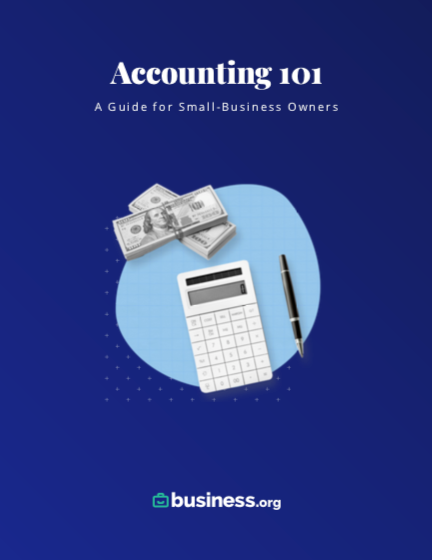We are committed to sharing unbiased reviews. Some of the links on our site are from our partners who compensate us. Read our editorial guidelines and advertising disclosure.
What Is an Accounts Receivable Aging Report?
As a small-business owner, you’re probably always looking for ways to increase cash flow and access to capital. An accounts receivable aging report can show you which invoices are consistently going unpaid so you can eliminate bad debts. While the name makes it seem complicated, creating this financial report is actually fairly straightforward.
So what is an accounts receivable aging report, and why is it important? Let’s take a look at the many ways this type of report can benefit your business.
What is an accounts receivable aging report?
An accounts receivable aging report is a periodic report that categorizes a business’s unpaid invoices according to how long they have been outstanding. Invoices are typically sorted into columns such as “30 days past due,” “31–60 days past due,” etc.
Small business teams use this financial report to stay on top of unpaid invoices, determine which debts are unlikely to ever be paid (bad debts), and improve overall cash flow.
Why is an accounts receivable aging report important?
Small businesses can mine a wealth of information from an accounts receivable aging report. Here are a few of the many beneficial actions you can take based off the information in your report:
- Identify and get in touch with slow-paying clients.
- Discover flaws in the collections process (and improve the process).
- Maintain a steady cash flow.
- Identify bad debts.
By signing up I agree to the Terms of Use and Privacy Policy.
How is an accounts receivable aging report used?
You can use an accounts receivable aging report to determine which customers are limiting your cash flow—and which might need additional encouragement to pay their invoices. These insights can also help you create more effective credit policies, ensuring customers pay their invoices on time.
An accounts receivable aging report can also help you project future cash flow. For example, if you know some of your biggest customers have invoices due in the next 30 days, you can predict how much money you’ll have coming in to cover other business expenses over the course of the month.
How to create an accounts receivable aging report
You can create an accounts receivable aging report in just four steps:
- Gather and review all outstanding invoices.
- Organize the invoices according to how long they’ve been outstanding.
- Create a list naming the customers who have overdue accounts.
- Sort your list of customers based on how long their invoices have been overdue and the total amount due.
For the greatest clarity, it’s best to organize the accounts receivable aging report in a spreadsheet. Use the rows to list client names and the columns to list the aging schedule, as shown here.
The takeaway
An accounts receivable aging report is an essential part of accounting for any small business. The report is relatively easy to put together and helps you get a better pulse on the financial health of your business.
As you review your report, you’ll unveil potential cash flow issues, bad debts, and slow-paying customers—information that will help you improve your credit policies and collection practices to optimize future cash flow.
Would you like to learn more about bookkeeping? Check out Business.org for Small-Business Bookkeeping Basics.
Related reading
Accounts receivable aging report FAQ
Why is an accounts receivable aging report important?
An accounts receivable aging report is an important tool that helps small-business owners evaluate the overall financial health of their business, as well as their customers’ ability to pay outstanding invoices. Creating and analyzing this report can help business owners identify issues and improve the cash flow that is needed to grow a business.
Why is an accounts payable aging report important?
An accounts payable aging report helps small-business owners organize their finances and determine the best time to pay invoices. For example, sometimes a company could save money by paying an invoice ahead of the due date, while other times, it may be better for the company’s cash flow if they wait to pay the invoice.
How do you create an accounts receivable aging report?
You can create an accounts receivable aging report in just four steps:
- Review all open invoices.
- Organize the invoices by due date (soonest due date to farthest away due date).
- Create a list of customers with invoices that are past due.
- Organize your customer list based on how long their invoices have been outstanding and how much is due.
What data will you need to prepare the accounts receivable aging report?
You will need to gather the following data to prepare an accounts receivable aging report:
- A list of all open invoices
- Invoice due dates
- Invoice total amount due
- The name of the customer on the invoice
What 3 transactions are reflected in the accounts receivable aging report?
An accounts receivable aging report shows transactions that have been overdue for fewer than 30 days, for fewer than 45 days, or for fewer than or more than 90 days.
What does an aging report show?
An aging report shows a list of customers with open invoices, organized in order of how long the invoices have been outstanding. Small-business owners can use the information to highlight cash flow issues, adjust credit policies, or calculate the number of invoices that may never be paid.
Disclaimer
At Business.org, our research is meant to offer general product and service recommendations. We don't guarantee that our suggestions will work best for each individual or business, so consider your unique needs when choosing products and services.
